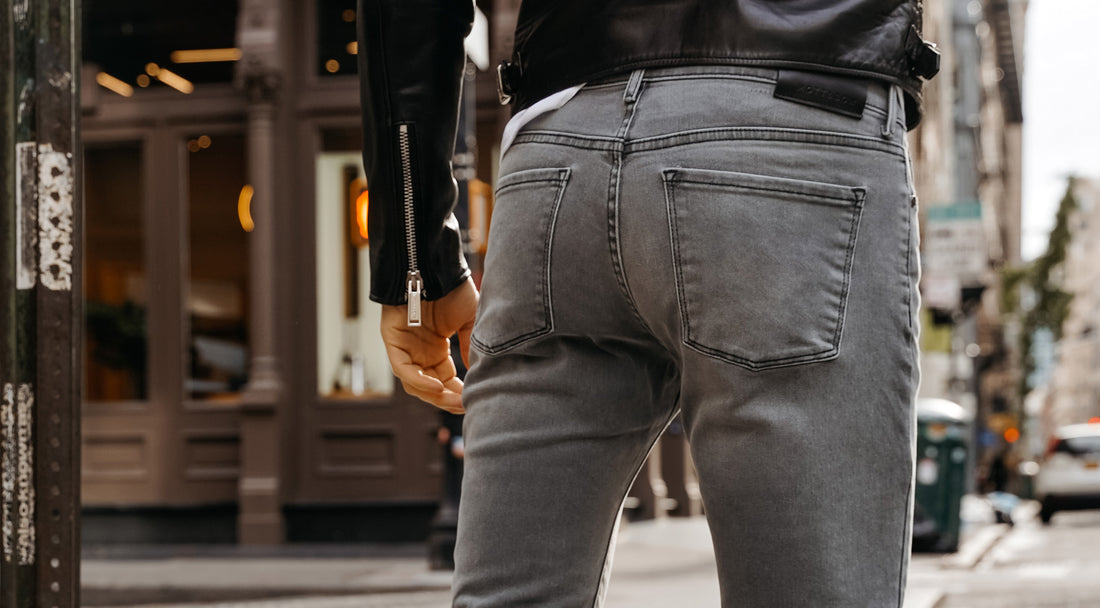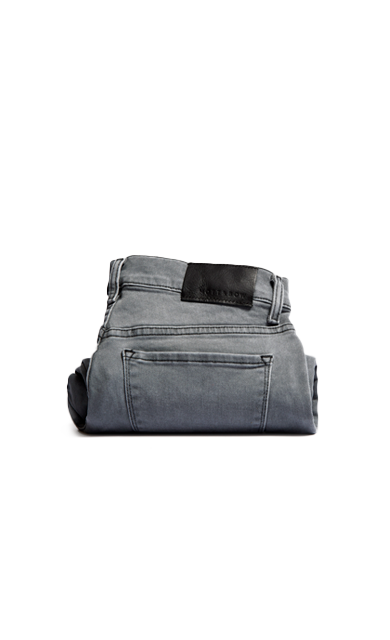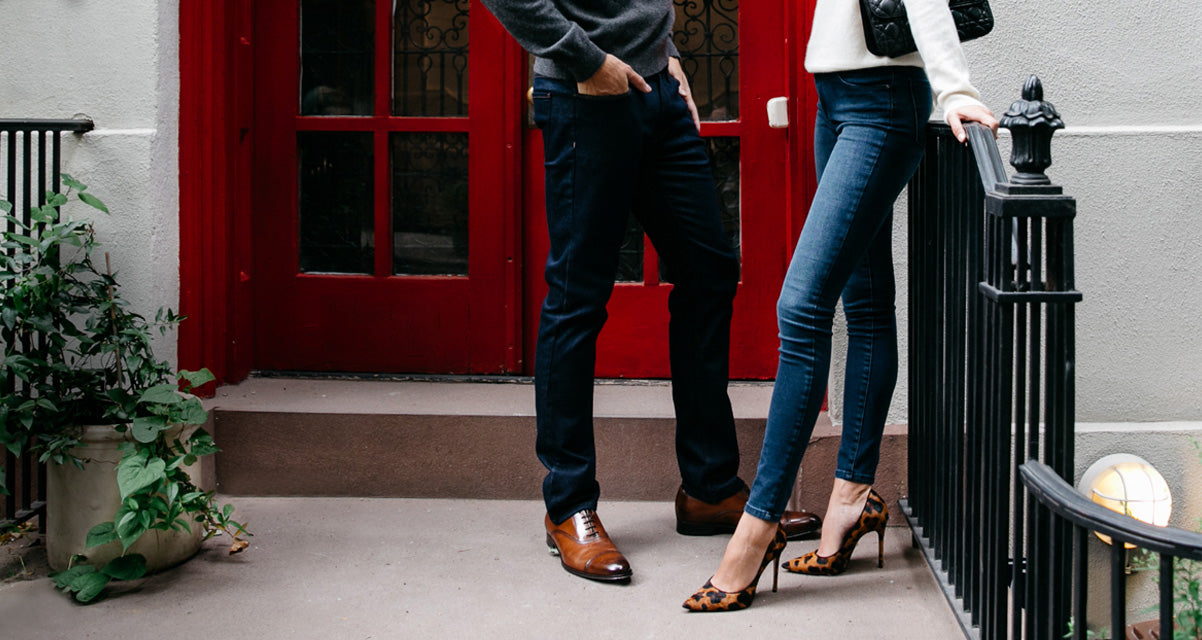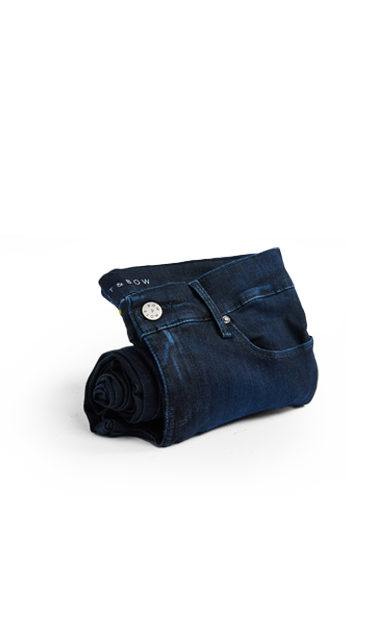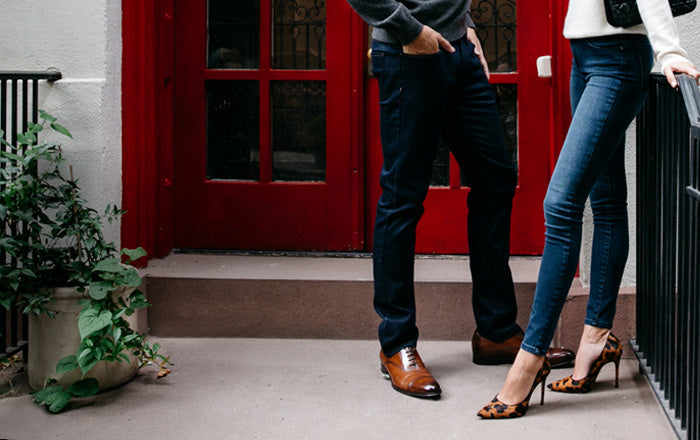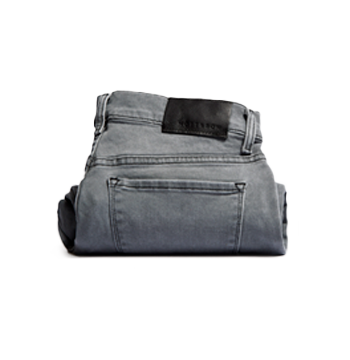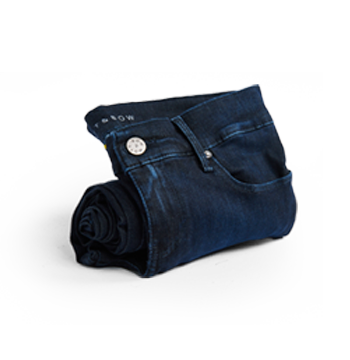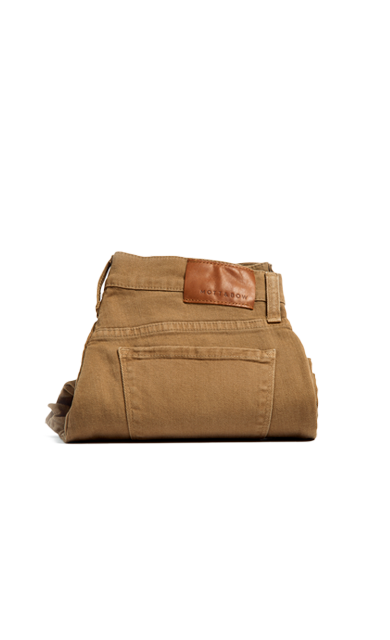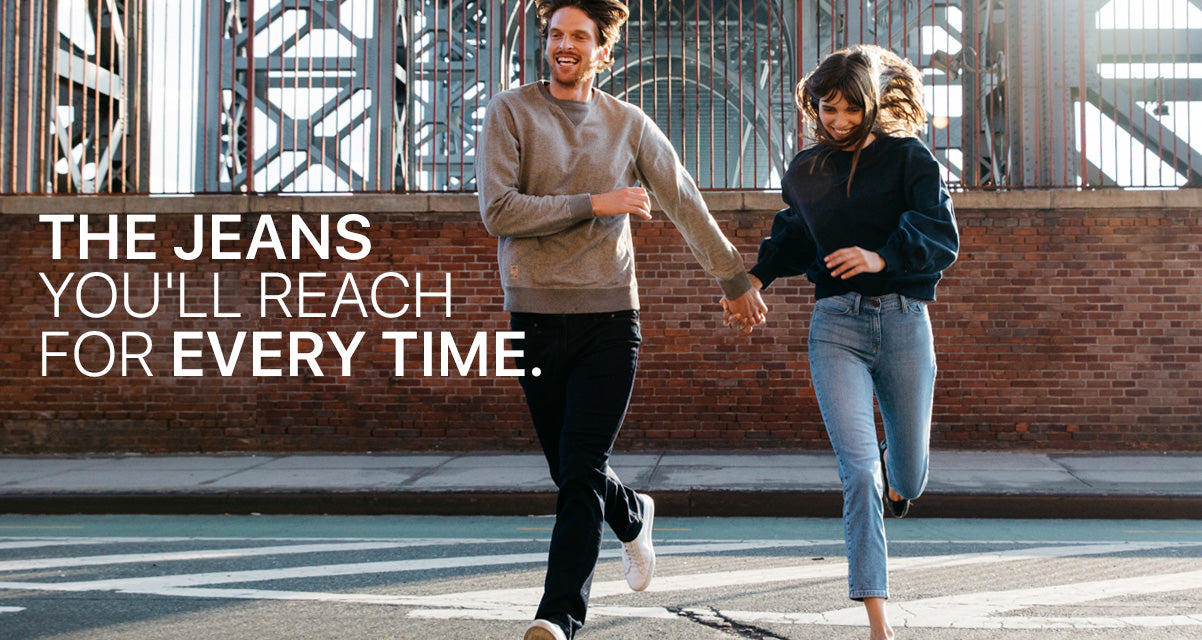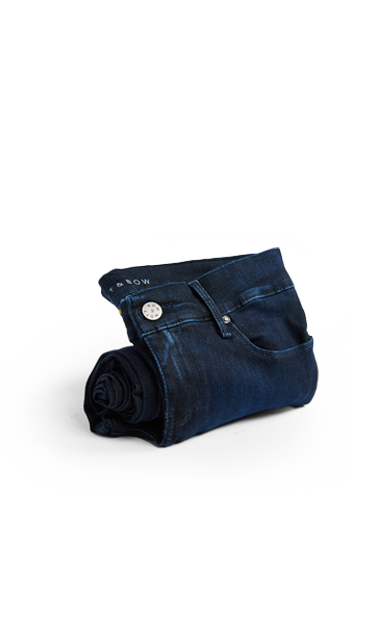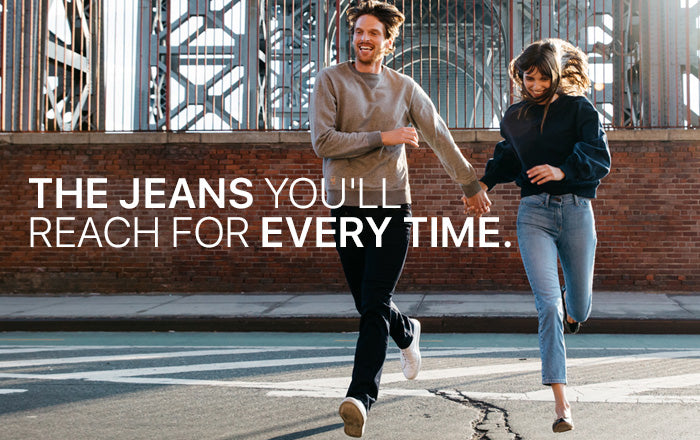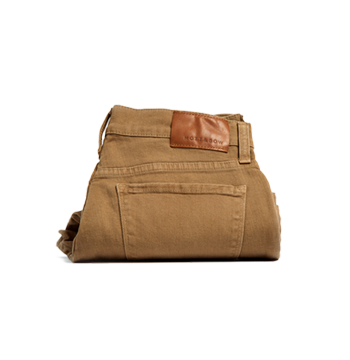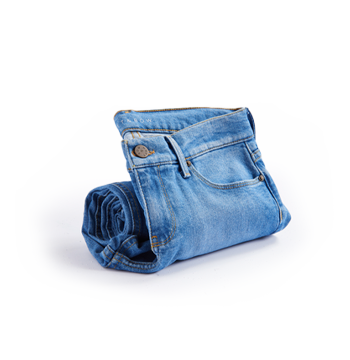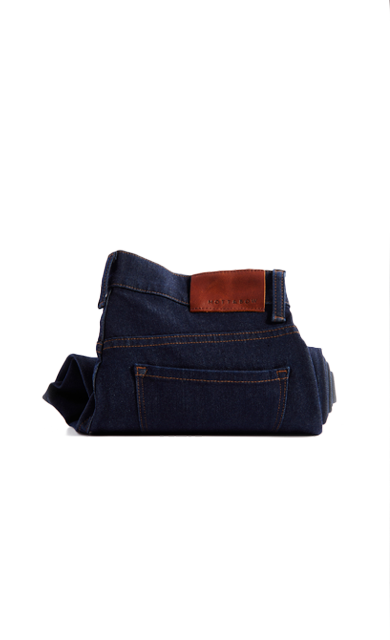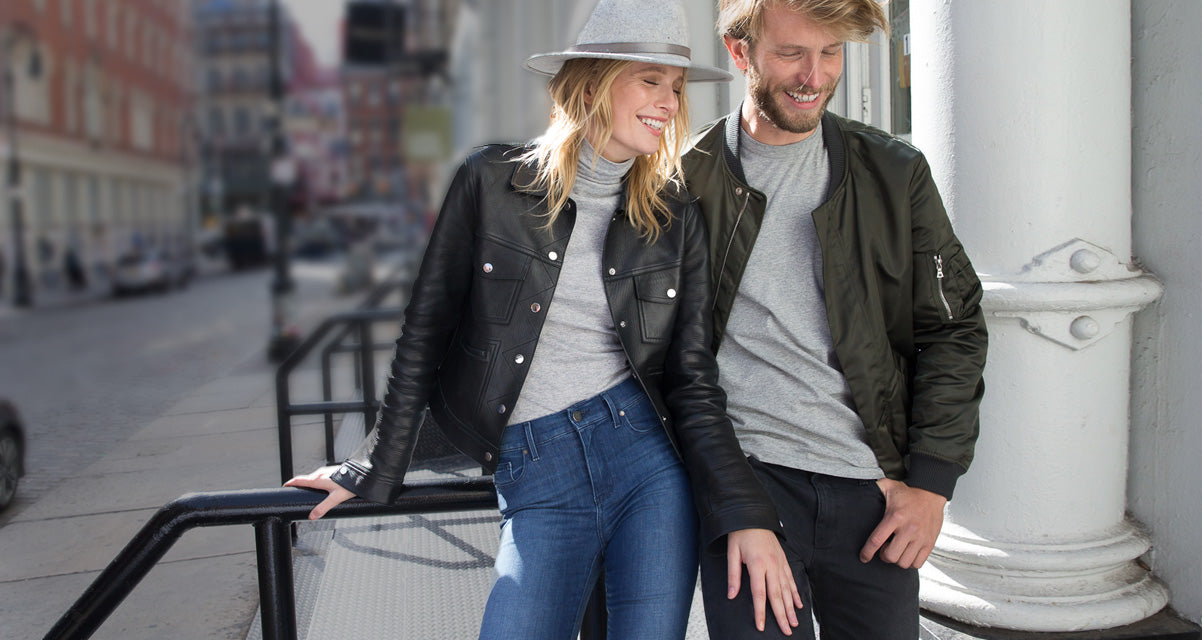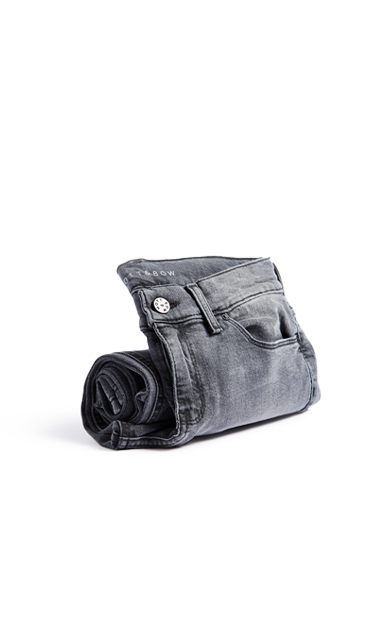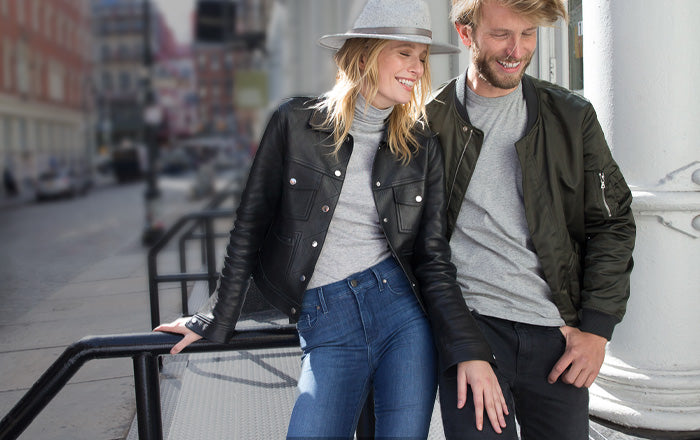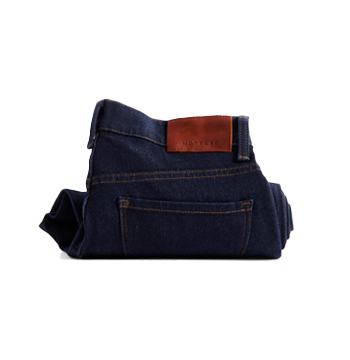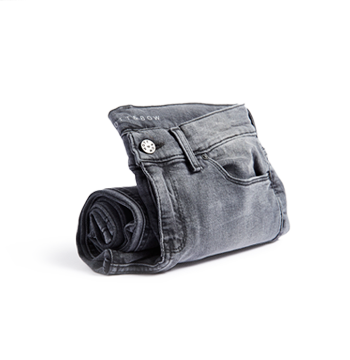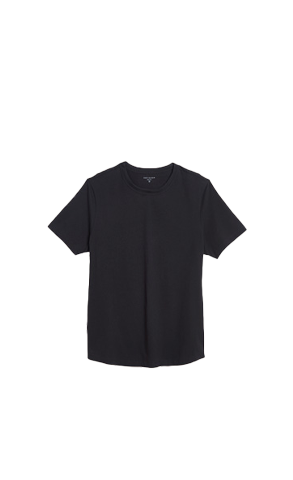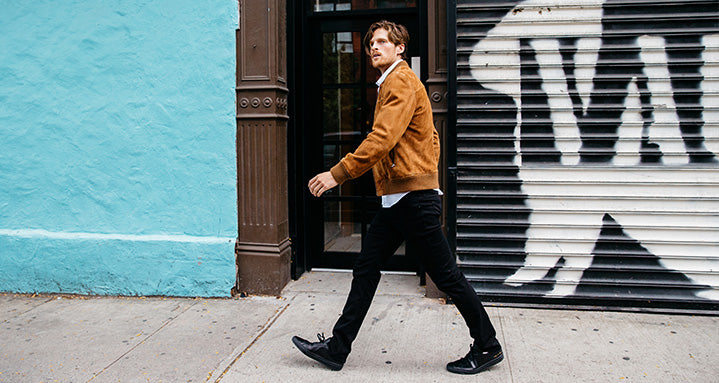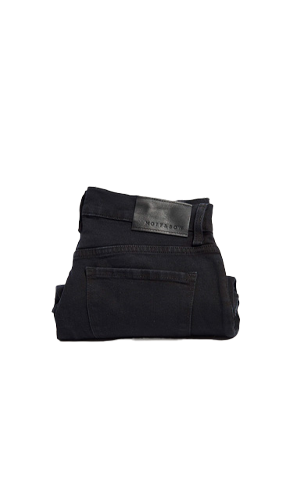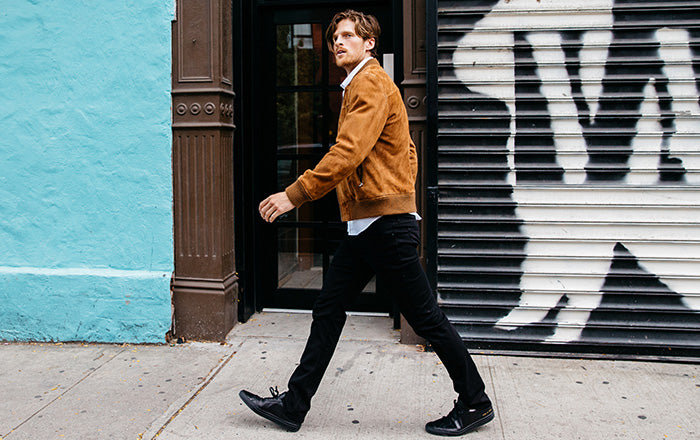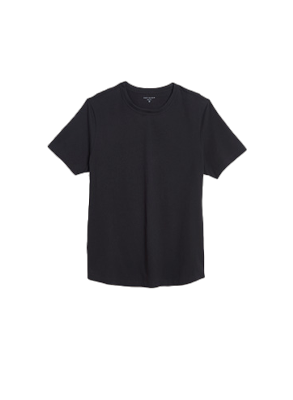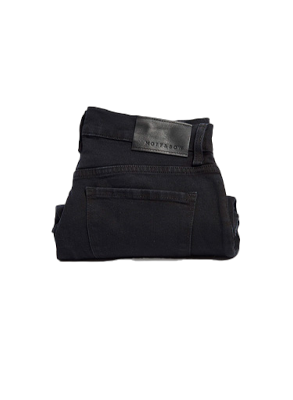How jeans should fit you is an eternal question that has plagued mankind for many centuries. Well, maybe more like many years. Or since 1873, to be exact, when jeans were first created.
With multiple fits, styles, lengths, rises, colors, washes, weights and textures, choosing the perfect pair of jeans can be a source of great confusion for even the most seasoned shoppers. We’d like to help clear up some of that confusion by letting you in on two of the secrets we’ve discovered in our time at the denim industry.
Secret #1: There is no such thing as the perfect pair of jeans. Most people will have a couple of jeans they love that they’ll use for different occasions or seasons. So don’t put so much pressure on finding the pair of your dreams-just choose something you like, that you feel comfortable in, and you’ll be good to go.
Secret #2: The first step to knowing which jeans you should be getting is knowing what type of jeans are out there. Many people constrict themselves to skinny jeans because they don’t even know they could get slim fitted ones (and still look trendy, to boot).
So our Mott & Bow Jeans Fit Guide for Beginners is here to help with exactly that. Read along to discover the different types of fits, rises and lengths available.
Choose Your Jeans Fit

Straight Fit Jeans
What they are: The most classic of silhouettes, this fit sits just below the waist and runs straight through the hips, thigh and legs with no taper. In other words, the width of the cut is the same both above and below the knee. Neither extremely tight or baggy, this style is extra comfortable as it provides room to breathe and move freely.
Who they’re for: Straight fit jeans are extremely versatile and look great on just about any body type. They’re flattering on men who are tall or have wider hips, but they also suit those on the slimmer side-they’ll just have to be a bit more careful with the fit of the rest of their outfit so as not to go overboard with the oversized look.
How to style them: This kind of denim gives off 90’s vibes, and experts suggest looking to that same period for styling inspiration. But, then again, they also work just fine when paired with white sneakers and a plain tee for a casual, cozy feel.
Slim Fit Jeans
What they are: If you feel straight jeans are too baggy and skinny jeans too tight, slim fit is for you. Consider them skinny jean’s more easy-going sibling: they’re still tapered, but less so, and they offer a little bit more fabric so that not everything is on show.
This kind of denim is more narrow towards the legs and even more so near the bottom but is not skin-tight, allowing a wide range of movements.
Who they’re for: Slim fit jeans provide a more tailored look and create a long and lean silhouette that is flattering on most body types. It’s worth mentioning, however, that if your thighs are on the more muscle-loaded end, chances are slim jeans will still look like their skinny counterparts on you. If you’re on the thinner or shorter side, on the other hand, this pair is a great idea.
How to style them: If they’re a dark wash, slim fit jeans can easily pass as a substitute for slacks or chinos. Dress them up with a blazer and you’re ready for the office or a nice restaurant. But if you’re looking for a more laid back outfit, a hoodie or graphic tee will do the job. They’re truly versatile so feel free to style them for the most diverse occasions!
Skinny Jeans
What they are: A second skin. Well, nearly! Skinny jeans taper from the top of your thigh all the way down your leg and ankle. They cling to your body, but at Mott & Bow we make them with an extra stretch factor that makes them extremely comfortable, as well.
Who they’re for: Anyone that isn’t scared to show off their figure!
How to style them: You can rock skinny jeans with basically anything. A fitted tee will give off a really sleek look. A collared shirt elevates the outfit a bit, and a sweater will make it more business casual
Bootcut Jeans
What they are: As their name suggests, bootcut jeans leave enough room at the hem to go over boots. This cut widens from the calf to the ankle and creates a subtle hourglass silhouette that’s both sleek and roomy.
Who they’re for: Anyone feeling like breaking out their cowboy boots! Or interested in standing out a little in a sea of skinny and slim.
How to style them: With cowboy boots, duh. But you can also pair them with a black or dark colored sweater for a simple yet sophisticated look. We also suggest going with a button down or flannel shirt for an outfit that’s both retro and cool.
Loose fitting Jeans
What they are: The roomiest cut available! Loose fitting jeans are even broader than your standard “Relaxed Jeans”: they offer plenty of extra space inside the seat, legs and leg opening to create a baggy fit. Considering them the complete antagonists of skinny jeans.
Who they’re for: Men who like to bend, crouch and move comfortably, or who are sick and tired of denim clinging to their body like a second skin. Embrace the oversized trend!
How to style them:
- Go for hoodies or bomber jackets instead of tight t-shirts, as your upper half should typically be broad or oversized to balance the loose fit below.
- For shoes, choose chunky styles like boots, sneakers, or skate shoes.
- Make sure your jeans touch or fall just above your shoes, so that they have some shape.
- And remember, loose fitting jeans make for casual outfits. Slimmer fitting jeans are still best for more formal occasions.
Choose Your Jeans Rise
Mid rise
What they are: A classic rise for most body types that should rest right at the belly button.
Who they’re for: If you’re not blessed with long legs, mid rise jeans are a great option. They’re also great if you want to show off your physique.
How to style them: These are ideal for men who prefer to tuck their shirts into their pants. Choose this pair if you have an important meeting or dinner.
Pro tip: Truth is, the length of most pants can be altered and the waist adjusted, but even the most experienced of tailors won’t be able to increase the rise. Shortening the rise, though possible, is a difficult and expensive alteration. So pay special attention to the rise of your jeans when purchasing!
High rise
What they are: Jeans with a rise longer than 10 inches, versus a regular rise of 9 to 11 inches, that sit at the waist rather than at the hips. Wearing pants at the waist is generally a good decision for formal wear, and jeans with this rise will look more tailored.
Who they’re for: High rise jeans are a great option for tall men (think 6’ feet and over), as well as for those on the heavier side who would like to hide their belly a little.
How to style them: High rise pants contribute to a more sophisticated, mature look, so you might want to pair them with formal shirts. Keep in mind that this kind of rise is especially effective at visually lengthening your body, and use that to your advantage.
Low rise
What they are: Jeans that rest below the belly button and offer a more relaxed, casual look.
Who they’re for: If “athletic” and “muscular” are ways you’d describe yourself, go for these jeans. They’ll give you a chance to show off your gym bod without appearing bulky. If you’re on the slightly heavier side, low rise jeans are still a good option, but we’d recommend sizing up a bit.
How to style them: Long shirts! A shorter tee will rise up and reveal a sliver of midriff every time you move your arms.
Choose Your Jeans Length
Cropped Length Jeans
What they are: Shorter pants that give off a relaxed “I just rolled up my jeans to dip my toes in the sea” aura. They should hit just below your mid-calf and rest a comfortable three inches above your shoes.
Who they’re for: Anyone looking for a relaxed look and interested in letting in a much appreciated breeze during the summer.
How to style them: With cropped jeans you’re intentionally showing your ankles, so don’t cover them with your shoes! Whether you pair them with sneakers when running errands, slip-ons to maintain that casual look, or leather loafers for a fancier outfit, make sure they’re low cut.
Ankle Length Jeans
What they are: Jeans that fall at the ankle or just above. At this length, you should opt for a slimmer ankle that is not too wide, as this will shorten your entire length.
Who they’re for: Men who love the ankle-showing trend!
How to style them: Sneakers or loafers are the way to go when wearing ankle length jeans, as this kind of style is very casual.
Full-Length Jeans
What they are: Generally speaking, jeans should be long enough to reach the tops of your feet with a little extra fabric, but short enough that the hems aren't dragging on the ground.
Who they’re for: Traditional men who prefer to stay on the classic side of things. You can't go wrong with this pair!
How to style them: Denim is pretty versatile, and full length jeans kind of go well with anything and everything, so it really depends on the occasion. A nicely fitting tee is a good option for a more casual setting, and a shirt can elevate your outfit for a night out or dinner at a nice restaurant.
Factors to Consider While Choosing Right Fit of Jeans
Mott & Bow’s top 5 quick and easy tips to choosing the pair of jeans that actually fits you correctly:
- #1: Your jeans should fit your waist without needing a belt.
If they fall without one, they’re too big. And if you can’t get the zipper up, they’re too small! - #2: They should slightly hug your butt area without feeling constricting. You should be able to sit or squat without feeling like they might rip!
- #3: Experts recommend slightly pinching the fabric around your thigh by holding it between your thumb and forefinger, to check if your jeans fit you correctly. You should be able to pinch a fingertip worth of fabric, around 0.5 inches, but no more than 1 inch on either side of your thigh.
- #4: Make sure the fit you’re buying is the one you should be buying! Skinny, straight, extra skinny, the options are nearly endless. Take a look at our guide above for some help navigating the confusing seas of denim shopping!
- #5: Avoid stacking! That’s what happens when your jeans are way too long on you. Make sure you’re buying the correct length, but if you already have a pair that looks like the fashion disaster portrayed in the images below, you can nearly always get them fixed by a tailor, and it’s pretty inexpensive.
FAQs:
- How tight should jeans be on a guy?
Forget what’s trendy right now and what isn’t: jeans should be comfortable! Most people put their jeans on as soon as they get up and don’t take them off till nighttime. Do you really want to feel uncomfortable and constricted the whole day? If the answer is no, then you’ve also found the answer to how tight jeans should be: tight enough so that they’re not baggy (unless you’re into that, which is fine), and loose enough so that you feel comfy and not like they’ll rip if you sit or squat.
The best way to check the tightness of your jeans is by pinching the fabric around your thighs: you should be able to pinch a fingertip worth of fabric, arounch 0.5 inches, but no more than 1 inch on either side of your thigh.
- How do you know if jeans are too big?
Quick tip: if you need a belt to hold up your jeans, then they’re too big on you.
- Do jeans get tighter when you wash them?
Jeans typically stretch out a bit after wear (think around half a size), but after washing and drying them, they shrink back to their original size. So they won’t get tighter or smaller than they were when you bought them, but they might revert back to their original shape if they had stretched out after a couple of uses!
-relatedPosts-
SHOP STORE
